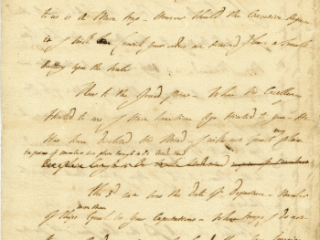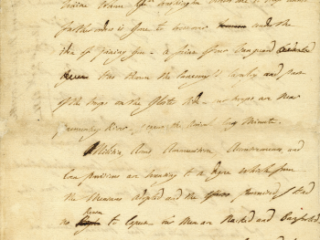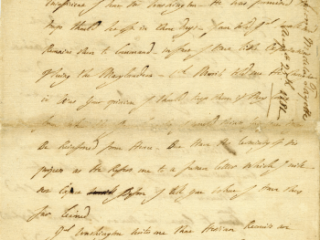Marcee Hinds, Baker High School, Mobile, Alabama
DESIGN LEVEL: Middle School-High School
Overview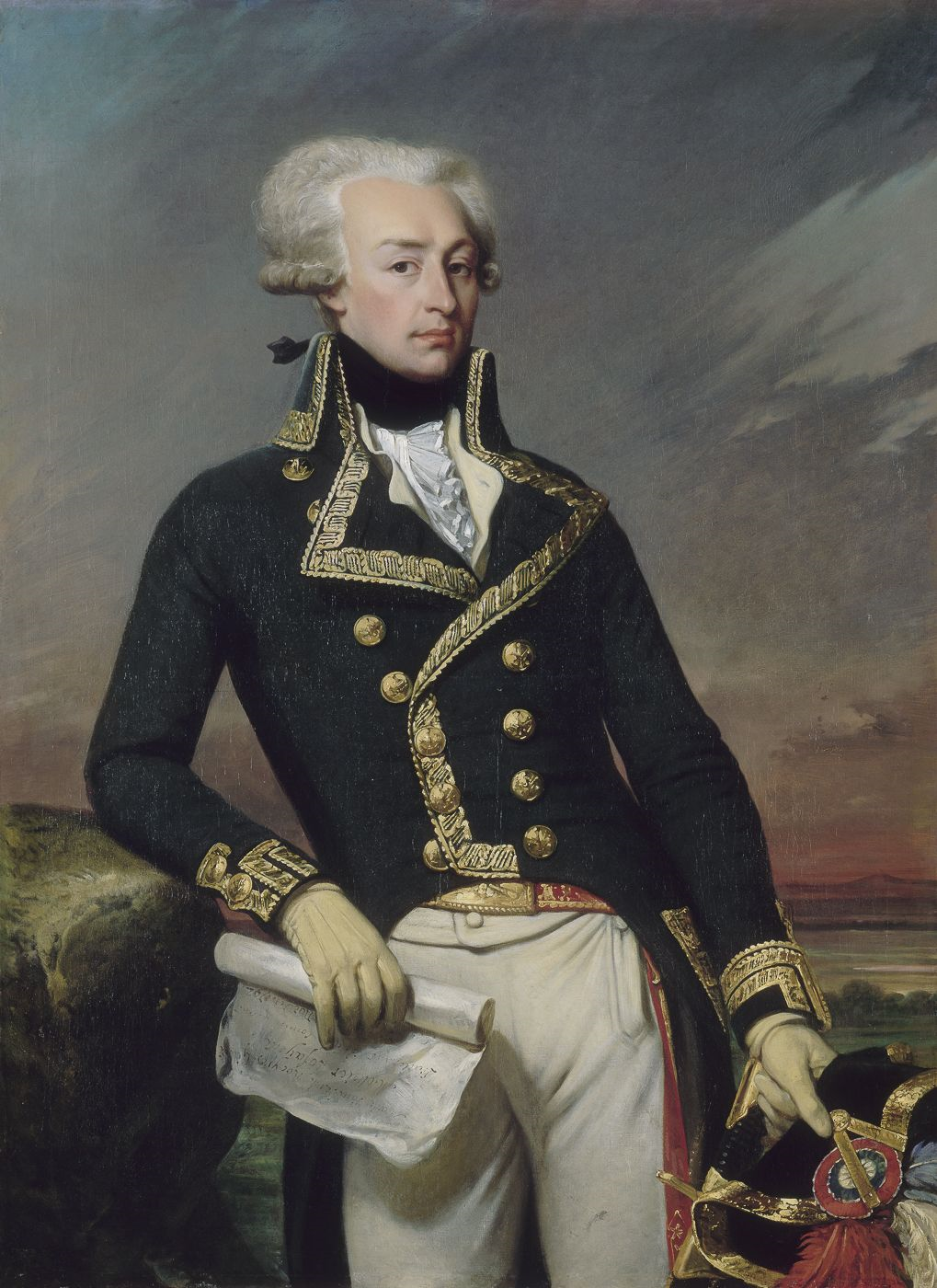
As the summer of 1781 came to a close, General Nathanael Greene and Major General Lafayette were on British General Charles Cornwallis’s heels as he and his troops progressed through Virginia. In August 1781, Cornwallis settled his troops on the Yorktown peninsula with hopes of establishing a naval base and coordinating an exodus from Virginia with his forces to rejoin General Howe in New York, where the British hoped to end the war. By the end of August, Lafayette was urging the American commander George Washington to head southward, along with French forces, to cut off Cornwallis and his troops on the Yorktown peninsula through a combined land and naval attack. Unfortunately, conditions had deteriorated among Lafayette’s troops during their pursuit of Cornwallis through the southern states.
To better understand Lafayette and his troops’ plight, as well as his continued commitment to the American cause, students will read and evaluate Lafayette’s letter to General Nathanael Greene from late August 1781, just two months before the American victory on the Yorktown peninsula.
Objectives
Students will:
- use critical thinking skills to analyze a primary source document written by Major General Lafayette to General Greene;
- gain a better understanding of the plight of the Continental Army leading to the Yorktown campaign; and
- define and appreciate Lafayette’s role as Major General in the Continental Army.
Materials
- Marquis de Lafayette to General Nathanael Greene, August 25, 1781, The American Revolution Institute of the Society of the Cincinnati
- Written Document Analysis Worksheet, National Archives
- Google Maps (if applicable)
- Marquis de Lafayette to General Nathanael Greene, August 25, 1781
Recommended Time
25-30 minutes
Activity
Before engaging students in primary source analysis, use the following information to enlighten students about Lafayette’s role in the southern campaign that leads to Yorktown.
Step 1:
Open the lesson by explaining to students that by the time he returned to the United States in 1780 after a brief diplomatic mission to France, Lafayette was a respected and favored officer of Washington’s. As a result, the Marquis was placed in command of Continental forces in Virginia.
Share that by the summer of 1781, Major General Lafayette was on the heels of British General Lord Cornwallis and his forces. Cornwallis had settled at Yorktown, a small town strategically situated on the York River with easy access to the Chesapeake Bay. Cornwallis anticipated British ships’ arrival to transport him and his troops to New York to join General Howe and his forces.
Note to students that though the siege of Yorktown became the last major battle of the American Revolution, General Washington believed the war would end with an American victory at New York. Remind students that New York had been under British occupation since they forced Washington and the Continental Army out in 1776.
As commander of the Continental forces in Virginia, Lafayette’s job was to coordinate troop movements and prevent Cornwallis’s forces from retreating through North Carolina—a task in which Lafayette would prove successful. Lafayette also succeeded in containing Cornwallis at Yorktown, Virginia, which sits on a peninsula—a position allowing for the strategic siege of the town by French and American forces in October 1781. The British, encamped in a place that rendered them vulnerable to attacks by land from the west and south by Lafayette and Washington’s forces, was equally at risk to naval attacks from the east by the French.
Lafayette’s containment of General Cornwallis and his forces at Yorktown encouraged Washington and the French commander, the Comte de Rochambeau, to join troops in Virginia to carry out an attack on the British. With the arrival of Washington and Rochambeau in the fall of 1781, French and American forces laid siege to Yorktown for three weeks and forced General Cornwallis to surrender.
Explain to students that being a Major General in the Continental Army was much more than just leading troops into battle. Many logistical matters had to be handled to secure the troops’ safety and well-being to ensure they would be ready when called to duty on the battlefield.
Tell students they will read an excerpt from Lafayette’s letter to General Nathanael Greene in late August 1781. Ask students to note the importance of Lafayette’s location. He was writing from Ruffins Ferry, Virginia, less than 50 miles northwest of Cornwallis’ position at Yorktown as he awaited Washington and forces from New York—to put this into perceptive for your students, it might be useful to locate Ruffins Ferry using Google Maps to show its exact proximity to Yorktown.
Step 2:
After sharing the background information, distribute Lafayette’s letter to Greene and the Document Analysis sheet. Instruct students to read through the letter to gain a basic understanding of its contents.
Step 3:
After students have completed the initial document analysis of the letter, ask students to identify within the contents of the letter what Lafayette informs General Greene about the following topics, and to record their answers on the back of their worksheet:
- troop movements,
- the containment of Cornwallis,
- rations and supplies,
- the state of his troops, and
- needs from General Washington.
A partial transcript of the letter from Lafayette to Greene may be shared with students to assist with this activity.
Assessment
Use the following questions to lead a class discussion on Lafayette’s letter to Greene. Instruct students they should use direct evidence from the document to support their answers.
- What does this information illustrate about Lafayette’s importance as Major General in the Continental Army?
- What does this information tell us concerning the plight of the Continental Army leading into the Yorktown campaign?
- From the information Lafayette relayed to Greene, were the Americans in a strong enough position to launch an attack on Cornwallis and his forces? Why or why not?
- What does this letter convey about Lafayette’s feelings about America?
Standards Addressed
COMMON CORE: English Language Arts Standards—History/Social Studies—Grade 6-8
Historical Analysis and Skills Development: Reading, Writing, Speaking, Listening; Writing: Key Ideas and Details; Craft and Structure: Integration of Knowledge and Ideas
ALABAMA SOCIAL STUDIES STANDARDS:
ALCOS Tenth Grade, United States History I (3.)
Trace the chronology of events leading to the American Revolution, including the French and Indian War, passage of the Stamp Act, the Boston Tea Party, the Boston Massacre, passage of the Intolerable Acts, the Battles of Lexington
and Concord, the publication of Common Sense, and the signing of the Declaration of Independence. [A.1.a., A.1.b., A.1.d., A.1.g., A.1.i.]
- Explaining the role of key revolutionary leaders, including George Washington; John Adams; Thomas Jefferson; Patrick Henry; Samuel Adams; Paul Revere; Crispus Attucks; and Gilbert du Motier, Marquis de Lafayette
- Explaining the significance of revolutionary battles, including Bunker Hill, Trenton, Saratoga, and Yorktown
- Comparing perspectives of different groups in society and their roles in the American Revolution, including men, women, white settlers, free and enslaved African Americans, and American Indians
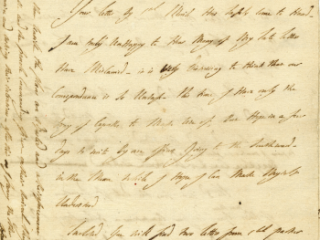
Marquis de Lafayette to General Nathanael Greene
August 25, 1781The American Revolution Institute of the Society of the Cincinnati
page 1Lafayette is writing to General Greene while in command of American forces at Malvern Hill near Ruffin's Ferry, Virginia, where he awaited the arrival of Washington's army. His letter includes troop movements and field developments during the southern campaign that concluded the revolutionary war: "The first destination is against His Lordship [i.e., Cornwallis].... The General directs that I should prevent the enemy from escaping through North Carolina."
